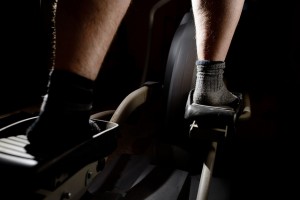
Photo courtesy of https://www.flickr.com/photos/knight725/
I hate to beat a dead horse, especially if he dropped dead from too much aerobic exercise, but society just does not seem to be getting the point about aerobic exercise.
Quite frankly, we’re doing too much.
I know that many of you are disappointed to hear this. After all, in today’s rush-rush society everyone is getting the recommended 30 minutes minimum of aerobic exercise at least 3 times per week, right? Yeah. Reality check–most Americans still do not have regular exercise as part of their lifestyle routine. And, even if they are, it’s likely they are not doing the most beneficial type.
The research continues to support a short-burst, high intensity, aerobic activity rather than a single bout of light to moderate intensity workout. Personally, when I’m doing one of my short bursts on the treadmill or elliptical, I’m going all out for that 30 second session. It’s not a leisurely pace at which I could maintain a conversation on my cell phone to some out of the country customer service rep for my mortage. When I’m done with my burst, it takes some time (1-2 minutes) to recover somewhat from the oxygen debt I have accumulated.
This particular study is yet another one to chalk up for the short-burst aerobic crowd. This small study looked at 11 obese individuals (aged 18–35 years) who were prediabetic and had them performed differently on three different days:
1. Sedentary behavior with no exercise
2. Otherwise sedentary behavior with 1-hour of morning exercise at 60%–65% peak VO2
3. Same sedentary behavior with 12-hourly, 5-min intervals of exercise at the same intensity
Researchers than checked sugar and insulin levels in the bloodstream. Here are the results:
• Glucose levels were actually lower in the interval exercise and sedentary situations.
• Glucose levels were higher in the 1 hour exercise situation than in the sedentary situation for about 2.5 hours.
• Glucose levels were also higher in the 1 hour exercise situation than the interval exercise situation for about 4 hours.
• The production of insulin was 20% higher with the interval exercise when compared to the other two situations.
While this study was not on high-intensity aerobic activity, it does demonstrate the benefit of breaking up the exercise routine into small groups instead of a single time period.
How do YOU spend your time exercising??
